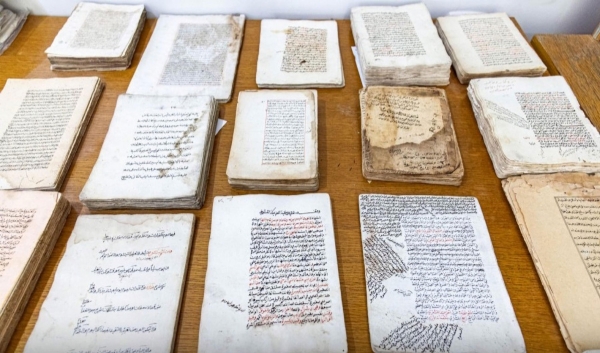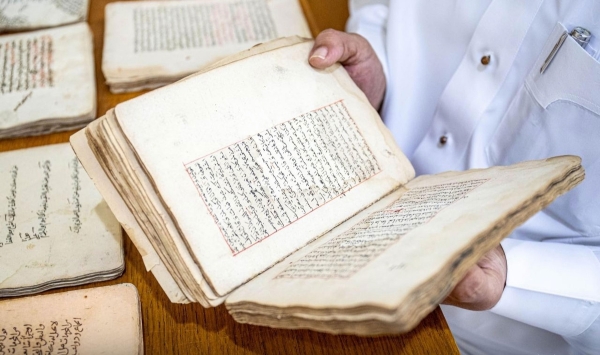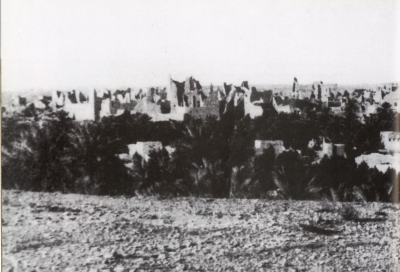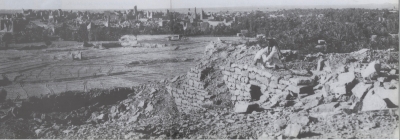

Paper in Najd is the paper used for writing manuscripts, documents, and wills in Najd during the First and Second Saudi States. The raw materials for its production, such as trees and plants, were not abundantly available in Najd to allow for local manufacturing. This made importing it from outside Najd more convenient and cost-effective for scribes and scholars. The names and types of paper in Najd varied depending on their sources and uses.
Names of paper in Najd
During the era of the First Saudi State, various names were used for paper in Najd, depending on the material it was made from or the name of its manufacturer. Some of the names known in Najd include:
- Al-Qirtas: This was an old term used since the seventh century in Najd. It was imported from various places. The paper that came from Hejaz was rough in texture and brownish in color, and it was the most commonly used for Najdi manuscripts, as well as the paper imported from India. In northern Najd, books and paper were brought from southern Iraq. One of the documented mentions of al-Qirtas appears in a letter sent by Imam Faisal Bin Turki to the historian Uthman Bin Bishr, in which he referred to al-Qirtas and complained about its scarcity in Najd, stating that it would be brought from Makkah through pilgrims. This indicates that many students in Najd sourced al-Qirtas from Makkah. Another reference appears in a letter from Imam Abdullah Bin Saud, in which he wrote, "Two bundles of al-Qirtas will be delivered to you, Allah willing." This demonstrates the role of the Imams from Al Saud family in securing al-Qirtas for scholars and students.
- Al-Kaghad: This name appeared in Najdi traditional poetry, as mentioned in the poetry of Jabr Bin Sayyar in the sixteenth century. Al-Kaghad was brought to Najd from Iraq via the caravans of pilgrims passing through Najd on their way to Makkah.
- Al-Waraq : This term was rarely used in Najd and appeared mainly in Nabati poetry. Among the poets who mentioned it were Ibrahim Mohammed al-Qadi and Mohsen al-Hazzani, among others.
- Al-Talhiyyah: This name is attributed to the person who produced this type of paper, Talhah Bin Tahir, the second ruler of the Tahirid dynasty in Khorasan (822-828). People in Najd often used this term to refer to longer sheets of paper compared to other types, which were used for recording documents and wills. Talhiyyah was also mentioned in Najdi traditional poetry in several verses by poets such as Rumaizan Bin Ghasham al-Tamimi, Mohammed Bin Ushban, and Salim Bin Abdulhay.
- Al-Furukh: The plural of farkh, this name was introduced to Najd from Hejaz. The term al-Farkh was often used for long sheets of paper, reaching up to eighty cm in length. Paper merchants would purchase these sheets and cut them into various sizes for sale to students. Over time, the term came to refer to sheets divided into four pages. The scriber would determine the desired size and cut the sheet accordingly, either into four pages or more for smaller-sized paper.
-Al-Sijil: This term originally referred to long sheets of paper and is derived from classical Arabic. By the nineteenth century, the name came to be used specifically for papers designated for recording debts and property ownership. Al-Sijil paper came in different sizes and was also mentioned in Nabati poetry, where it generally referred to a single sheet of paper.
-Al-Tirs (pl. Turus and Atrās): This term referred to a sheet that had been erased and written on again, a process known as al-Tatris. In Najd, the name was used to indicate paper specifically used for individual letters.
Types of paper in Najd
Various types of paper were used in Najd during the rule of the First and Second Saudi States. Some types were whitish in color, while others were thin and delicate, or thick, coarse, and dark. The paper arrived in Najd without lines, and scribers would draw lines on the sheets by pressing them against a network of straight threads, which left visible imprints on the pages.
Sources of paper in Najd
The paper trade in Najd was limited, as its use was restricted to a specific group - scholars. In traditional poetry, some regions were mentioned as sources of paper in Najd, including the Levant, Turkey, and the Hejaz Region. Additionally, al-Ahsa was a source of paper due to its commercial activity, its scholarly presence, and its proximity to the Arabian Gulf coast, where ships arrived frequently. The closest region for paper imports was India, known for its distinguished paper production. Meanwhile, for the people of northern Qassim and Hail, Iraq served as their primary source of paper.
Related quizzes
Related articles


